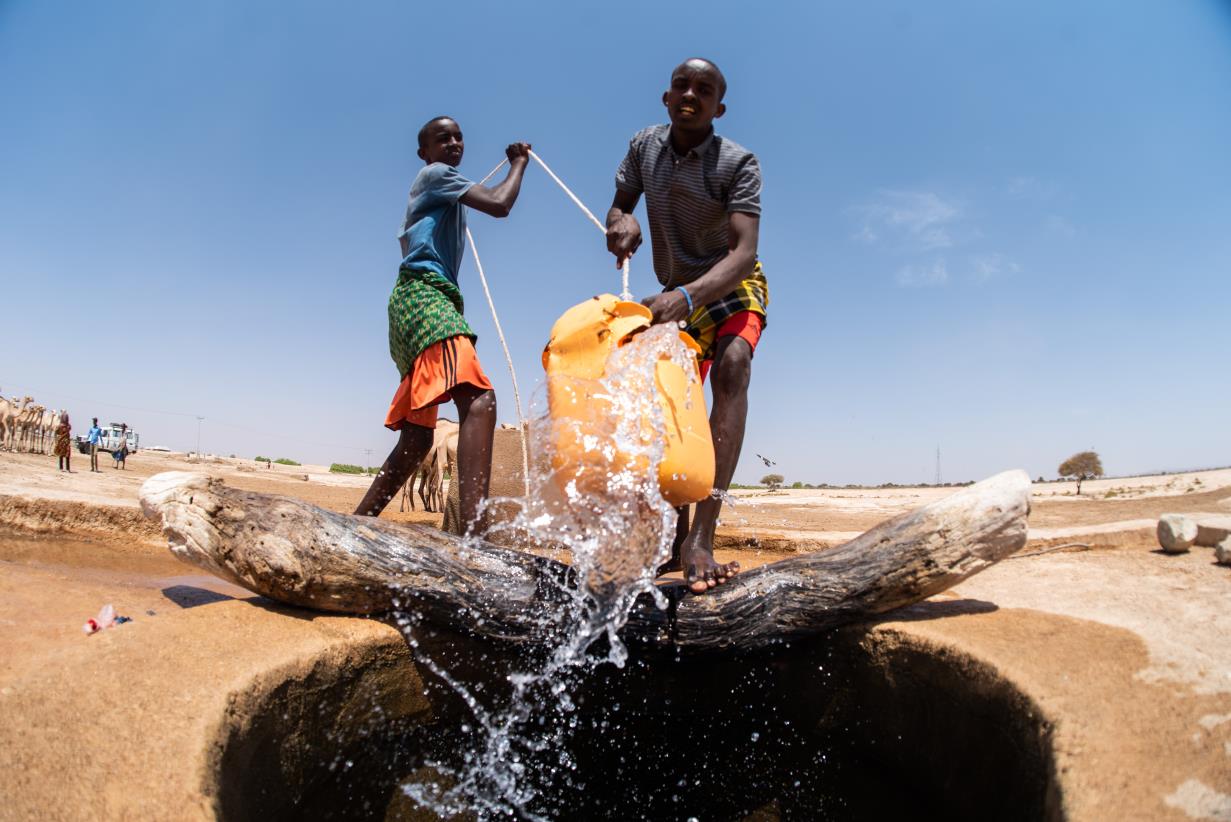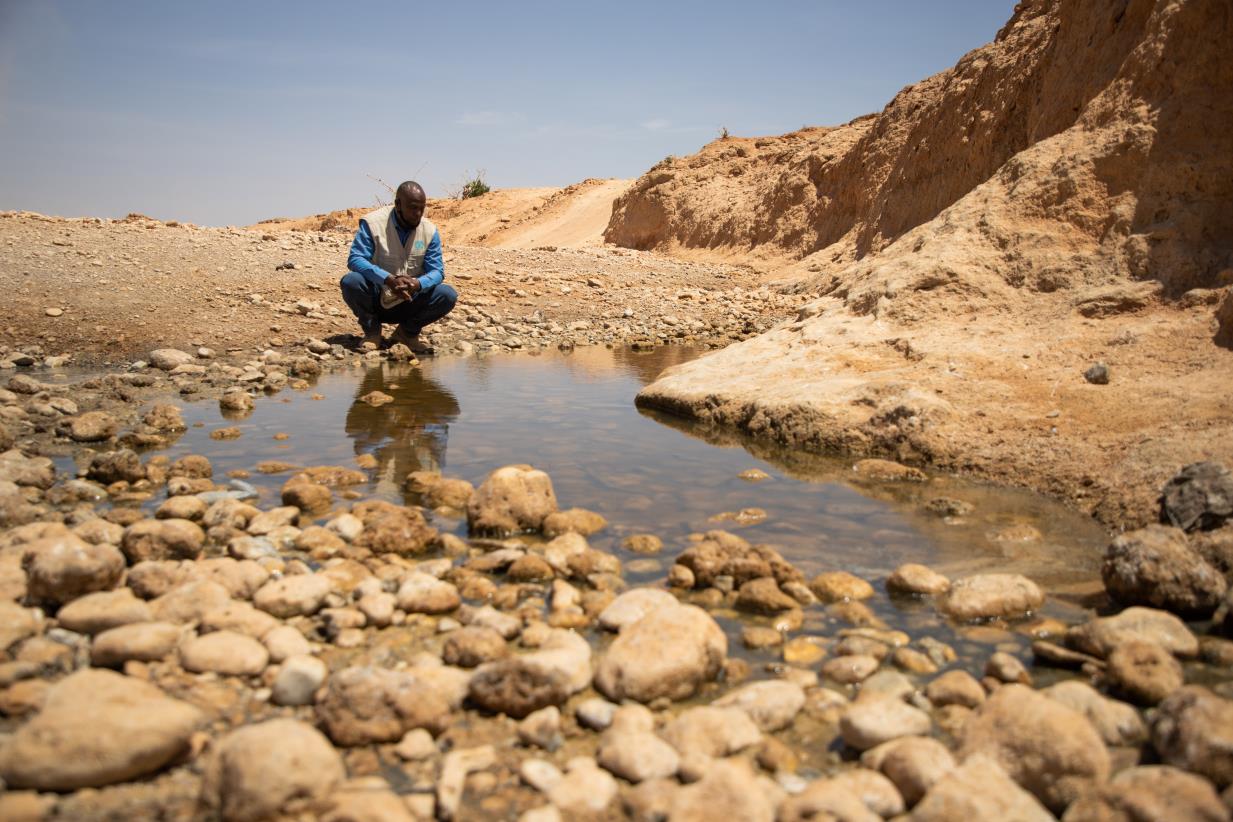
Groundwater: Making the invisible visible
Addressing groundwater depletion and pollution to ensure food security
The global economic contribution of groundwater in agriculture is estimated at approximately USD 230 billion annually. ©FAO/Essam Alkamaly
22/03/2022
While essential for life, water is often taken for granted. And that's especially true when this liquid gold is hidden underground. But like all natural resources, fresh water is finite, and our ways of living and farming are causing a serious dent in its supply.
Groundwater has helped lift millions of people out of poverty since technologies for drilling and energy sources for pumping became widely available to rural farmers during the latter half of the 20th century. The economic contribution of groundwater in agriculture is now estimated at up to USD 230 billion per year globally.
With a projected increase of 50 percent in the demand for food, feed and biofuels by 2050, relative to 2012 levels, the depletion of groundwater, left unabated, threatens to undermine food security, basic water supplies and resilience to the climate crisis on a global scale. As is so often the case, the poorest and most marginalized communities stand to lose the most.


Approximately 70 percent of global groundwater withdrawals are used to grow food and industrial crops and raise livestock. The agricultural sector must address these groundwater challenges. Left/Top: ©FAO/Michael Tewelde. Right/Bottom: ©FAO/Fahad Kaizer
What we owe to groundwater
India's Green Revolution of the 1960s, which ended centuries of famines and played a crucial role in lifting the country out of poverty, owes much to the abundance of water that can be found below its surface.
Today, India is among the world's largest users of groundwater, with this precious resource serving an estimated 60 percent of the country’s irrigated areas. Without it, India and many countries around the world would struggle to feed themselves. In North America and South Asia, for example, 59 percent and 57 percent of the area equipped for irrigation relies on groundwater.
Such gains have come at a price. In India, in order to provide affordable food for its rapidly growing population, local governments offered cheap— and in some places, free— electricity to farmers to operate their water pumps. This resulted in groundwater levels dropping to dangerously low levels in parts of the country, prompting the authorities to reverse such policies.
It's a similar story in neighbouring Pakistan, the world's fourth-largest user of groundwater, where decades of overexploitation have resulted in the country finding itself on the brink of a severe groundwater crisis, despite its Indus basin storing at least eighty times the volume of freshwater held in the country's three largest dams.
Over a period of 60 years, Pakistan has turned from a surface water-dependent country to a groundwater-dependent country and from a groundwater surplus country to a country with a significant groundwater overdraft.
A global concern
The growing scarcity of this liquid gold is global: there is compelling evidence to suggest that numerous aquifers are being exploited at unsustainable rates across the world. What's more, the indiscriminate use of fertilizers and pesticides is the biggest human-made cause of pollution to underground reservoirs.
Approximately 70 percent of global groundwater withdrawals are used to grow food and industrial crops and raise livestock, while about 30 percent of all irrigated water worldwide comes from below the ground, which is why the agricultural sector must play a critical role in addressing the issue.

Water productivity in agriculture can be improved by reducing water losses through modernization of irrigation systems and continuous groundwater monitoring. ©FAO/Michael Tewelde
What can be done?
Another issue comes from the conventional solutions of storing water, typically through the construction of big dams. Not only do such dams have a major environmental impact, they can also produce problems for society, for instance thorough the forced relocation of entire communities. FAO recommends that countries consider a broader range of nature-based solutions of managing their water storage, for instance by giving greater importance to the natural reservoirs in combination with surface water storage in flood plains, wetlands and naturally meandering rivers.
The continuous monitoring of groundwater consumption, particularly in irrigated areas serviced by non-renewable aquifers, is also crucial for its sustainable use. FAO is assisting governments and other stakeholders in order to help provide such tools as precision irrigation, water harvesting and storage and satellite technologies, which offer cost-effective opportunities for estimating groundwater consumption and abstraction levels by measuring actual "evapotranspiration" (a term that defines the sum of all forms of evaporation plus transpiration) in near-real time. FAO’s WaPOR tool currently provides this as open access data for the whole of Africa and the Near East.
There is an urgent need to make agriculture more efficient. Water productivity in agriculture can be improved by reducing water losses through modernizing irrigation systems, better water management and by increasing crop productivity through the use of higher yielding, nutritious crop varieties.
FAO, together with UN-Water and other partners, used World Water Day to raise awareness on the importance of groundwater resources for food production and food security, simultaneously launching the annual United Nations World Water Development Report, which this year focuses on groundwater.
Learn more
- Website: FAO Land & Water
- Website: FAO WaPOR, remote sensing for water productivity
- Story: Tracking water to make the most of it
- Report: United Nations World Water Development Report 2022
- Report: The State of the World’s Land and Water Resources for Food and Agriculture 2021- Synthesis Report

